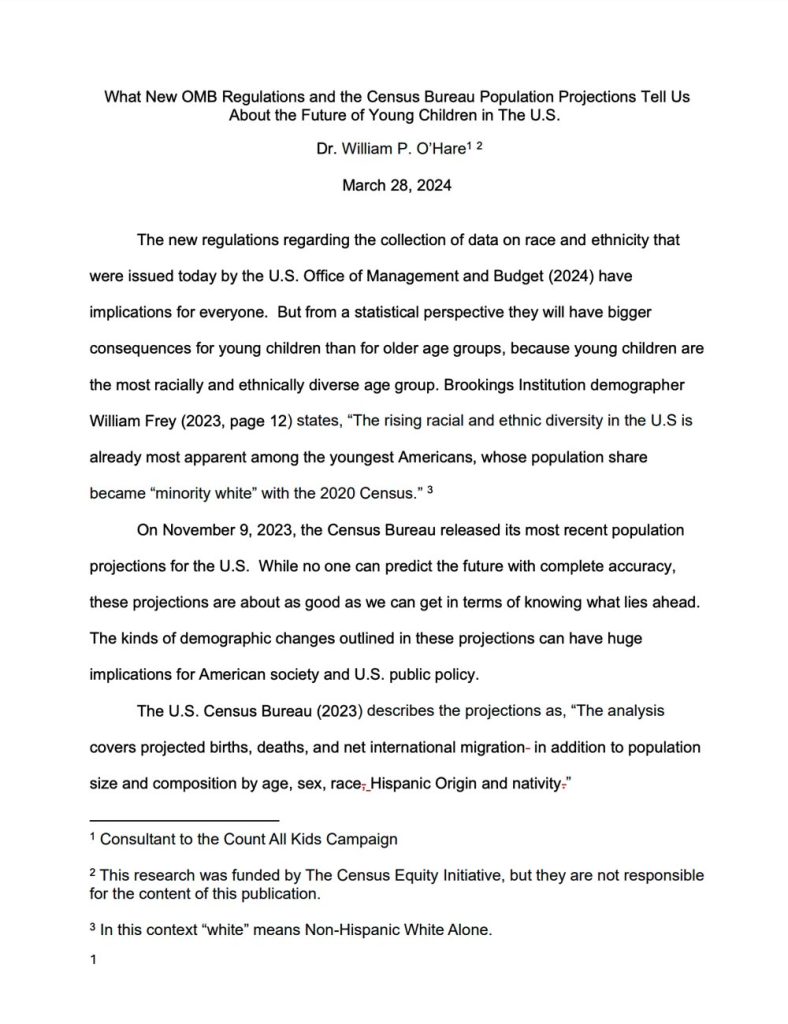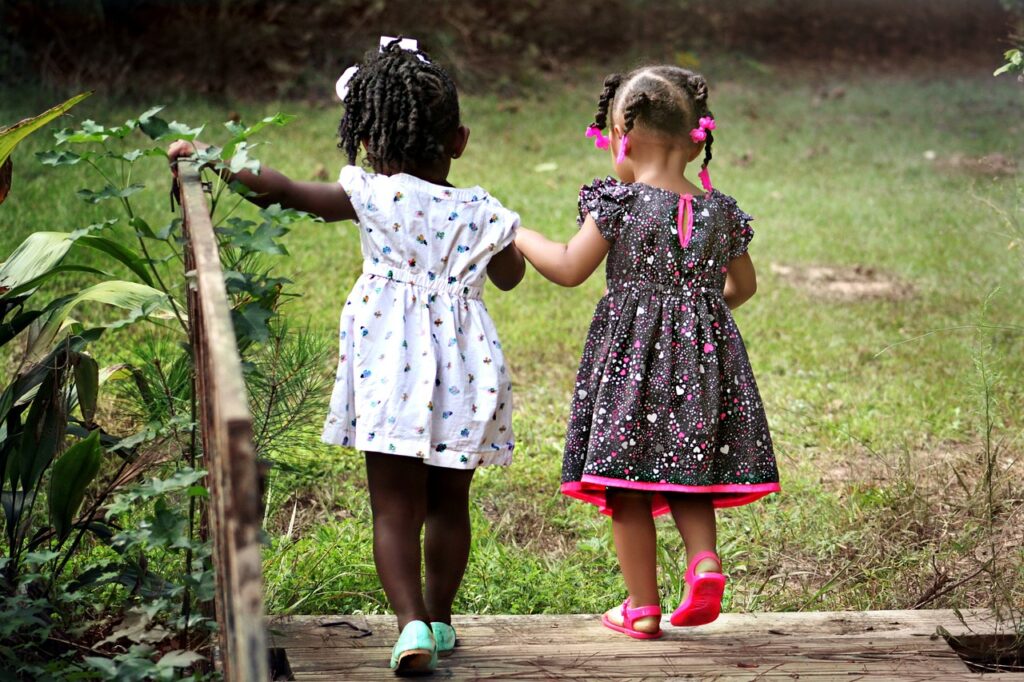The new regulations regarding the collection of data on race and ethnicity that were issued today by the U.S. Office of Management and Budget have implications for everyone. But from a statistical perspective they will have bigger consequences for young children than for older age groups, because young children are the most racially and ethnically diverse age group. Brookings Institution demographer William Frey states, “The rising racial and ethnic diversity in the U.S is already most apparent among the youngest Americans, whose population share became “minority white” with the 2020 Census.”
On November 9, 2023, the Census Bureau released its most recent population projections for the U.S. While no one can predict the future with complete accuracy, these projections are about as good as we can get in terms of knowing what lies ahead. The kinds of demographic changes outlined in these projections can have huge implications for American society and U.S. public policy.
The U.S. Census Bureau describes the projections as, “The analysis covers projected births, deaths, and net international migration in addition to population size and composition by age, sex, race, Hispanic Origin and nativity.”
The projected changes for young children are particularly important given the new standards announced by the U.S. Office of Management and Budget regarding what data will be collected by federal agencies and states implementing federal programs with respect to race and ethnicity because young children are the most racially diverse of any age group and they are in the vanguard of the nation’s changing demographic landscape.
In this report, the Census Bureau projections are used to look at the number of young children (ages birth to 4) and what share of the national population are young children each decade between now and 2100. Then I look at the changes in race and ethnicity of the young child population between 2022 and 2060.









